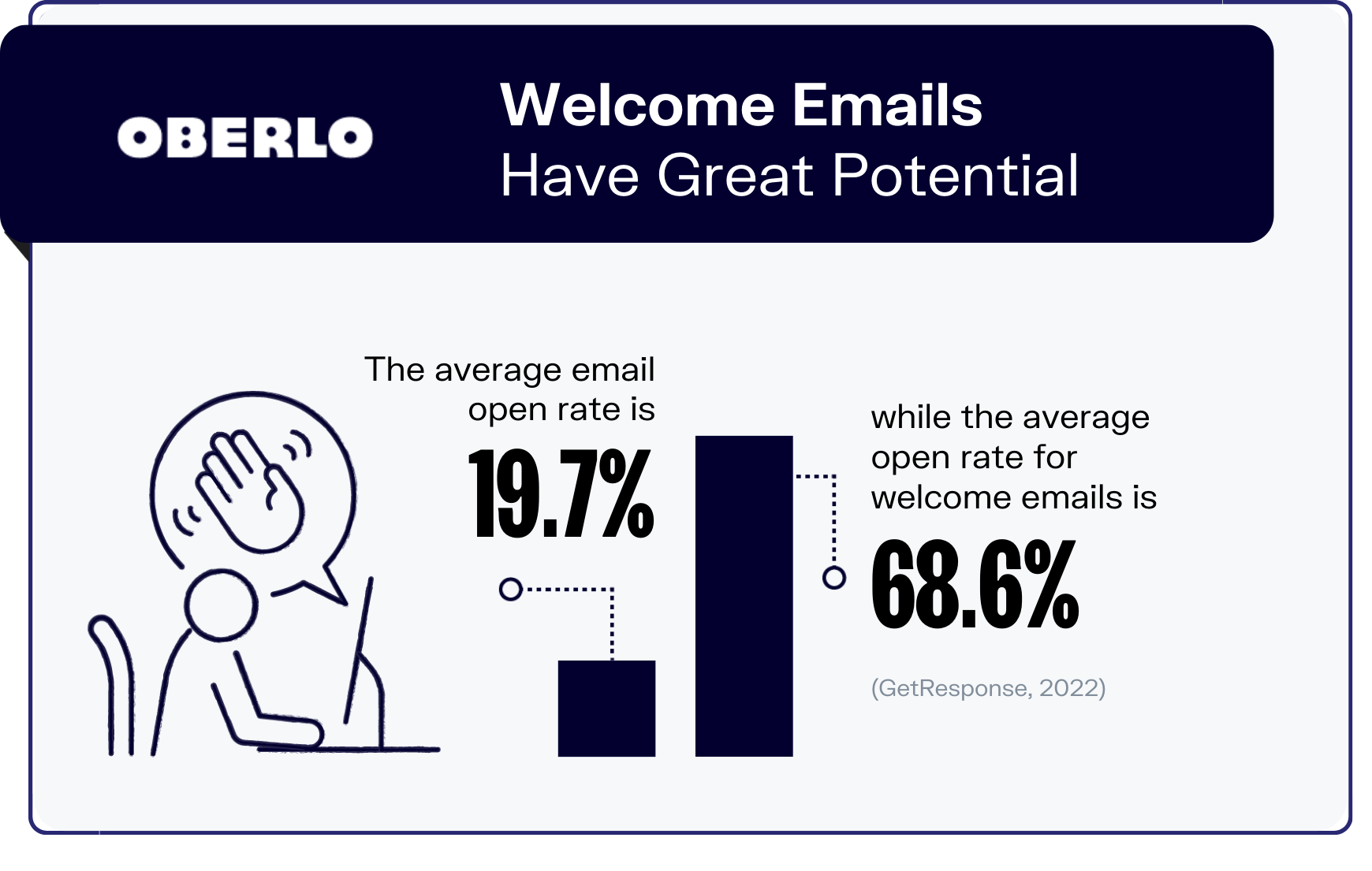The global bicycle industry will be worth an estimated $109 billion in 2032. With cycling participation continuing to grow across the country, bike shops remain an integral part of local cycling communities and a solid small business opportunity.

Opening your own bike shop allows you to combine personal passion with potential profits. Specializing in sales, service, rentals, or a combination thereof lets you focus on your strengths while meeting customer needs. Location and inventory tailored to your local market provide an inherent advantage over national chains. Hands-on work with two-wheeled toys never gets old for true cycling enthusiasts.
This guide will walk you through how to start a bike shop. Topics include market research, competitive analysis, registering an EIN, obtaining business insurance, optimizing accounting processes, forming a legal business entity, customer focus, and more.
1. Conduct Bike Shop Market Research
Market research is important to form a thorough bike shop business plan. It offers insight into your target market, local market saturation, existing bike shops in the area, and trends in the bike industry.

Some details you’ll learn through bike store market research include:
- Profit margins typically land around 35-45%.
- With low overhead and inventory costs compared to other retail sectors, bike shops can be quite profitable if run efficiently.
- Beyond sales of bikes, parts, and accessories, bike shops also generate significant revenue from maintenance and repair services.
- Growth opportunities exist in e-bike sales, rentals, customized builds, coaching/instruction, and event promotion.
- Capturing commuters and recreational riders as recurring service customers also creates stable revenue streams. Retail and repair markets show no signs of slowing with cycling participation still rising across nearly all demographic groups.
- Competition from mass merchants and online retailers can be fierce.
- Localization, customer service, and community connections give neighborhood bike shops key advantages.
- Choosing strategic store locations where target recreational and transportation cyclist traffic is high helps maximize sales potential.
- Adaptability to introduce new inventory and services meeting local demand is also key.
While the bicycle business is not without its challenges, bike shops remain a $7 billion sector with room still to grow. For passionate cycling entrepreneurs, few ventures mesh vocation with avocation so seamlessly.
2. Analyze the Competition
Analyzing the competition is imperative when preparing to open a new bike shop. This includes evaluating both local brick-and-mortar rivals as well as assessing wider online retailer threats.

Thoroughly researching area bike shops will reveal the number/size of existing businesses, types of inventory/services offered, pricing strategies, customer service reputation, and marketing methods. Directly visit or call competitors posing as a customer to gauge responsiveness, knowledge level, upselling abilities, etc.
Evaluating the competition’s web presence and e-commerce capacities is equally important even for a small local shop. Analyze competitor websites for design, user experience, SEO optimization, and product/service information. Sign up for email lists to review promotions, specials, and customer retention campaigns.
Monitoring online behemoths like Amazon or Walmart for bicycle product listings, ratings and prices shows what an independent shop is up against. Checking competitor sales volumes on platforms like eBay or Etsy further informs. Google Shopping listings reveal who ranks highest for related product searches.
While daunting, analyzing the competition from all angles provides critical Intel to then position a new bike shop strategically. This includes locating in underserved areas, tailoring inventory/service mixes to meet gaps or undercut pricing, outshining peers digitally, or leaning into custom builds/personalized service as a differentiation point.
3. Costs to Start a Bike Shop Business
When launching a bike shop venture, prospective owners must strategically budget for both initial investment costs as well as recurring monthly and annual expenses.
Start-up Costs
Start-up costs typically fall between $100,000 to $250,000 depending primarily on retail space lease/purchase expenses in the target market. Additional one-time startup costs include:
- Incorporation fees & business licensing – $1,000
- Shop furnishings – $15,000-$30,000 for displays, racks, counters, etc.
- Initial inventory purchase – $30,000+ for bikes & accessories stock
- Shop branding – $2,000 – $5,000 for logo design, signage
- Technology systems – $3,000 – $10,000 for POS system, computer, security system, website development
- Tooling, Storing (pallets, drawers, etc.) & Equipment – $8,000+ for pro bike repair tools, bike stands, protective gear, shop necessities
- Professional services/fees – $3,000+ for legal, permits, insurance
- Staff training & hiring – $4,000+ for employee onboarding
- Pre-opening marketing & promotions – $2,000 – $4,000+ for advertising
- Grand opening event – $500-$5,000+ depending on the size of a community event
Ongoing Costs
Ongoing operating expenses generally fall in the range of $135,000-$185,000 annually for a single shop location including:
- Inventory replenishment – $50,000+ to restock popular items
- Payroll expenses – $40,000+ for 1-2 full time & 3-5 part-time staff (always worth having a handyman around as well to help with potential repair requests from customers)
- Rent & utilities – $12,000-$60,000+ depending on location/size
- Insurance premiums – $2,500+ for liability & product coverage
- Shop maintenance & janitorial – $3,000 for upkeep & cleanliness
- Marketing – $4,000+ for retention campaigns & promotions
- Accounting & legal fees – $5,000+
- Merchant services, bank fees – $3,000+
- Technology costs – $1,000 for system maintenance
- Miscellaneous supplies – $2,000+ for administrative needs
- Owner draw – $10,000+
Carefully projecting both the initial investment and ongoing overhead provides start-up bike shop owners with an important blueprint for structuring financing and pricing products/services at profitable yet competitive rates.
4. Form a Legal Business Entity
When starting a bike shop, owners must weigh options on business structure for implications on taxes, liability protections, and operations scaling. The four primary entities each have advantages and drawbacks to consider.
Sole Proprietorship
A sole proprietorship provides an easy setup with no formal registration needed beyond typical licenses. Low start costs appeal to single-owner operations, but the owner assumes full liability for shop debts and legal issues. Personal assets can be seized, in a hazardous industry working with heavy gear.
Partnership
Partnerships enable multiple owners to share control, skills, and investment costs through formation filings added to a sole proprietorship. However, each partner also assumes full profit share and legal liability. Partner disputes can dissolve operations absent clear agreements. Income passes through to partner returns.
Limited Liability Company (LLC)
A limited liability company (LLC) limits owner liability and separates personal assets from the business. Registering as an LLC shields owners from shop debts or legal judgments protecting personal finances. The LLC structure accommodates single or multiple owners and enables pass-through income tax treatment without self-employment tax on full earnings.
Corporation
Incorporating as a distinct C or S corporation adds more formality through issued shares and required corporate governance. Rigid ownership policies can deter attracting investors to smaller shops, though liability stays with the business not shareholders. Double taxation of profits can result. Incorporation better suits mature bike shop chains looking to raise capital through share sales.
5. Register Your Business For Taxes
An Employer Identification Number (EIN) serves as a unique business identifier for tax purposes similar to a Social Security Number for an individual. Even sole proprietors must obtain an EIN to facilitate company registration and Federal tax filings for the business.
Bike shops specifically need an EIN to open a valid bank account, process purchases for inventory from wholesale suppliers, hire employees, and interface with state/government agencies appropriately as an official company.
Applying online for an EIN takes mere minutes and avoids mailing delays. The IRS assigns numbers immediately upon an electronic application. Follow these steps:
- Navigate to the IRS EIN Assistant site and select Apply Online Now
- Choose view Additional Types including Sole Proprietorships and view Entity Types
- When asked “Does your business or organization already have an EIN?” select No
- Choose Sole Proprietorship as the “Reason you are requesting an EIN” and enter your SSN when prompted
- Enter the bike shop’s official Legal Name; address, county, and state where the business is or will be located
- Submit your details on the next page to receive your EIN confirmation notice
The EIN approval contains the identification number for usage across relevant licenses, tax documents, registrations, etc. needed to operate legally.
Additionally, bike shops must seek sales licensing in their home state for authority in collecting/remitting sales tax on goods. Registering with state tax boards enables proper wage reporting for employees. Most states provide online registration options with minimal costs.
6. Setup Your Accounting
Operating a bike shop necessitates diligent financial recordkeeping and accounting to sustain profitability and ensure full legal compliance. Investing in tools and services to establish organized recordkeeping habits from the outset saves considerable time while avoiding costly errors and penalties for noncompliance.
Accounting Software
Implementing small business accounting software like QuickBooks provides an intuitive platform to connect bank/credit card accounts and reconcile transactions automatically across suppliers, staff, and customers. Quickbooks significantly simplifies categorizing every business expenditure, creating detailed reports, tracking account balances, and generating annual tax documents with just a few clicks.
Hire an Accountant
Further budgeting for an accountant adds another layer of assurance by assigning record reconciliations, cash flow analyses, and more. Expect accountant fees between $200 and $500 monthly for periodic consulting and reporting depending on seasonal needs with additional year-end tax filing preparation costing $500-$2,000.
Open a Business Bank Account
Maintaining completely separate finances from personal banking and strictly using a dedicated business account and credit card further simplifies reporting. Distinct accounts, cards, and records enable accurate categorizing of every business expenditure for clean documentation while keeping personal transactions separate.
7. Obtain Licenses and Permits
Opening and operating a bike shop legally requires securing proper business licenses and permits beforehand to avoid delays or penalties. Find federal license information through the U.S. Small Business Administration. The SBA also offers a local search tool for state and city requirements.
Though administrative requirements vary across states and municipalities, most bike shops need to formally register their business structure and intent to operate specifically to retail trade focusing on bike-related merchandise and services. Acquiring permits also helps shops meet consumer protection compliance directives around areas like staff qualifications.
Zoning permits confirm that proposed bike shop locations adhere to commercial property use designations without impacting surrounding residential areas. Planning departments preprocess site plans checking building access requirements, parking allowances, signage placement rules, etc. before greenlighting openings through zoning allowances.
General business licenses essentially act as trade licenses for operating within certain industries. Municipal administrator offices approve submissions for proposed activities like retail bicycle sales ensuring shops meet codes for their offerings and locations.
Seller’s permits specifically enable shops designated as bicycle dealers to collect and remit sales tax on goods sold. Exemption rules still apply for certain customer types. Confirming tax structures before sales begin avoids back tax liabilities. Seller’s permits also help shops substantiate inventory sourcing from authorized bicycle and parts distributors.
Staff certification through voluntary bike mechanic training programs like those offered by the United Bicycle Institute and Barnett Bicycle Institute provide shops with licensed, professionally accredited technicians. Credentialed staff instill further consumer confidence while protecting public safety through demonstrated competencies in performing complex repairs.
8. Get Business Insurance
Given routine exposure to costly property damage, inventory loss, customer injury, and staff accidents, uninsured bike shops place their entire livelihood on the line daily. Just one major incident can lead to complete financial ruin and permanent closure if legal judgments or repair bills exceed business savings.
Even seemingly minor events can quickly escalate without insurance:
- A small grease fire rapidly spreads through the back workshop destroying thousands in equipment and inventory.
- An evening burglary nets thieves $100,000+ in rare bikes and parts that are never recovered.
- A customer is paralyzed after crashing on a hastily-repaired bike leading to long legal proceedings.
To mitigate risk, bike shops should secure tailored coverage spanning:
- General liability insurance covering premise dangers and product defects
- Commercial property insurance for structural damage and inventory
- Worker injury insurance protects both workers and customers
- Specialty coverage like cyber security policies
The typical process involves:
- Researching top-rated insurers specializing in retail business policies
- Getting quotes through broker sites like CoverWallet
- Selecting optimal coverages & limits aligning with shop size and risk exposure
- Finalizing application and submitting all required financials and legal documents
- Paying monthly premiums often ranging from $150-$500+ depending on levels of protection secured
Insurance enables managing the myriad risks bike shops face at reasonable rates generally running less than a couple percent of total annual sales. Going without policies needlessly jeopardizes years of hard work establishing a thriving shop.
9. Create an Office Space
Lots of your bike business will take place up front in the shop. Backend logistics, staff oversight, and general management duties require concentrated workspaces. This is where an office becomes necessary.
Home Office
Converting portions of a home into a functioning office costs little upfront if space allows, but mixing business and personal spheres can create distractions for some. Still, home offices offer total convenience at approximately $100-$500+ in basic furnishings assuming existing internet/utilities.
Coworking Office
Coworking spaces like WeWork provide vibrant, amenity-rich environments to focus on without commuting. Open layouts also enable networking with other entrepreneurs. Hot desk rentals typically run $300-$500 monthly. Private offices for 1-20 people average $600-$2,000 monthly depending on amenities, location, etc. However, contracts and fluctuating demand can constrain flexibility.
Retail Office
Separately renting basic retail office space above or adjacent to the shop salesfloor maintains visibility of operations for management at approximately $12-$20 per square foot annually. No commute also keeps owners accessible as issues arise while allowing customer meetings. However, costs scale directly with space needs which fluctuate.
10. Source Your Equipment
Launching a bike shop requires acquiring an array of specialty gear from tools to stands to fixtures tailored to bicycle maintenance and sales. There are a few ways to source mountain bikes, tires, tools, and other necessary equipment for your bike business.
Buy New
New products allow full personalization and warranty protections but with higher costs. Most items can be found through leading national bicycle parts distributors like Cyclone USA and Kent International. Inventory includes repair tools, workbenches, storage solutions, and retail displays meeting any shop needs. Order minimums, shipping expenses, and lead times vary across thousands of products.
Buy Used
Secondhand shop fittings and mechanic implements offer value savings over new if prior owners maintained functionality. Scour auction/marketplaces like Craigslist for solid deals on goods, though product conditions remain unpredictable. Facebook Marketplace and OfferUp also host local sellers. Be prepared to clean, tune, and repair pre-owned items upon arrival.
Rent
For extremely niche tools or heavyweight stands, rental agreements through national equipment outfitters like Taylor Rental let shops access specialty gear for limited durations without huge upfront buys. Flexible terms align asset access to seasonal needs. However, rental fees add up over years of renewing contracts.
Lease
Leasing essential equipment through dedicated financial providers brings predictable costs for bikes, tools, and shop fittings without major outlays. Approximately $350 monthly enables access to $15,000 in gear. Ownership transfers upon lease expiration. Lacking capital need not prevent acquiring operational equipment.
11. Establish Your Brand Assets
Strategically conveying the shop’s specialties and values through cohesive visuals and messaging sets the stage for recognition and trust in the community. As more sales migrate online, branding must translate digitally to reach broader audiences.
Get a Business Phone Number
Acquiring a unique business phone line through a provider like RingCentral centralizes customer communications with toll-free customer support and voicemail-to-text message forwarding to prevent missed sales. Choose local area code numbers to emphasize community presence at approximately $30 monthly.
Design a Logo
A custom logo becomes synonymous with the brand for shoppers. Bold, evocative graphics like cyclist silhouettes, wheel designs, and bicycle parts creatively represent central offerings when prominently placed across channels. Logo maker Looka crafts hundreds of concepts incorporating shop names and themes with full ownership rights from $20.
Print Business Cards
Printing specially branded apparel, business cards, packaging, bags, stickers, and signage enables the distribution of visual identity elements broadly long-term for under $20 set up fees and $5 per 25 cards using Vistaprint. Cards also make introducing the shop to locals through active networking efforts more memorable.
Get a Domain Name
Purchasing branded domain names through ICANN-accredited services like Namecheap secures the shop’s online identity both currently and in the future. For example: CityBikeShop [dot] com communicates offerings while establishing a credible locality. Expect approximately $15 yearly pricing.
Design a Website
Building out a custom website through user-friendly platforms like Wix provides a reliable online destination for promoting products, services, store hours, and contact options using pre-made templates. Those less web-savvy can hire an expert developer on Fiverr to handle technical aspects starting at around $150.
12. Join Associations and Groups
Area retailer groups like the National Bicycle Dealers Association unite regional shops for economical purchasing options through group distribution accounts, shared services contracts, insurance policy discounts even influencing local cycling infrastructure expansion through advocacy. Membership fees run under $300 yearly for shops under $15 million in sales.
Local Associations
Attend area races, rides, and festivals tabling alongside related brands through statewide cycling organizations like California Bike Coalition and New York Bike Coalition. Securing vendor spots at major rallies like the San Francisco Bicycle Coalition’s Bike Expo exposes offerings to thousands of potential customers. Discounted exhibitor pricing allows increased participation.
Local Meetups
The global Meetup.com platform enables discovering regional cycling groups facilitating shop introduction opportunities. Bike Meetups offer recurring chances to share expertise and custom product offerings with aligned audiences. Most groups are open for any enthusiasts to join and host 28 million global members.
Facebook Groups
Vetted industry communities on Facebook bring together niche experts inside invitation-only groups for sharing best practices. Chicago Bike Sellers, eBikes USA, and Bikes for Sale exchange technical guidance among thousands of members.
13. How to Market a Bike Shop Business
As the backbone of community cycling, shops rely on proactive outreach across digital and traditional channels ensuring visibility when riders need repairs, gear, or route advice. An “if you build it, they will come” mindset risks losing interest to purely online retailers and big-box names.

Referral Marketing
Satisfied customers who had positive service experiences often enthusiastically refer family and friends when asked. Providing prompt receipts that say “Did we exceed your expectations today? Share your experience on Google/Facebook!” facilitates easy sharing. Offering 10% off coupons to happy customers for each new referral they send creates helpful incentives.
Digital Options
- Run Google/Facebook paid ads geotargeting area cyclists to boost local impressions & click-throughs
- Launch Google Business Profile connecting shop info to searchers
- Start a YouTube channel creating repair tutorials and test ride videos to engage subscribers
- Share seasonal service specials and newly stocked gear/apparel on Instagram
- Send periodic email newsletters with sales, workshops, and ride group invites
- Blog about popular local trails, entry-level bike comparisons, or staff profiles
Traditional Options
- Print flyers to place on parked bikes and community boards
- Sponsor a local Little League team gaining impressions among sports families
- Run a “2 Tires for $20” radio spot during drive-time blocks
- Put eye-catching mobile billboards at busy intersections and bike trails
- Mail coupon packages to households around the shop location
- Advertise fitting services in health magazines/newsletters
Consistently cultivating community through digital engagement and targeted print/broadcast opportunities prepares shops for the sales growth phase. Optimizing budgets to amplify core offerings and accessible expertise keeps brick-and-mortars thriving.
14. Focus on the Customer
In specialty retail, knowledgeable, attentive service often outweighs sheer product selection driving sales. Cyclists value reliable mechanics, personalized gear recommendations, and routing advice as much as component upgrades or new bike transactions.
Consistently delivering thoughtful, reliable experiences tailored to rider needs and skill levels becomes pivotal. Actions like proactively explaining repair procedures in simple terms, fitting seats perfectly per unique body types, and giving trail suggestions aligned to described preferences make major impressions.
Investing in extensive staff training to offer best-in-class assistance ensures shoppers enjoy interactions while supporting continued growth through word-of-mouth referrals. Nearly 60% of bike owners say positive service experiences determine where they take future business while poor treatment risks losing customers indefinitely.
With burgeoning national competition, independent shops relying solely on convenient locations or established tenure may struggle to retain once-loyal riders. Renewing commitment to support through small gestures, prompt issue resolution, and incentives for shareable feedback rebuilds community foundations.
Prioritizing unparalleled service gives shops the agility to withstand outside threats. For successful business owners, customer relations is key.
